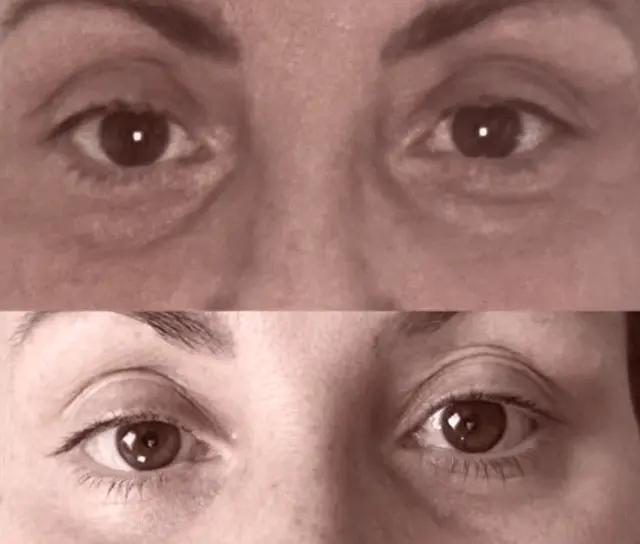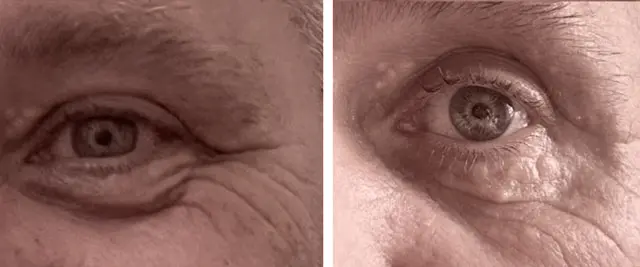Polynucleotides before and After

Amazing Polynucleotides before and After transformations revealed
Skin rejuvenation has welcomed a groundbreaking treatment that’s transforming the way we approach anti-aging: Polynucleotides. These natural DNA-derived compounds have captured attention in the aesthetic medicine field for their impressive ability to boost collagen production by up to 47% in just 23 days.
I’ve seen how these biostimulators work wonders in addressing various skin concerns, from stubborn wrinkles to sun damage. What makes polynucleotides truly fascinating is their ability to increase epidermal thickness by up to 52% while triggering the body’s natural regeneration processes. They don’t just mask skin problems – they actually stimulate your body’s own healing mechanisms to create lasting improvements in skin quality and texture.
Understanding Polynucleotides Treatment
Polynucleotides treatment utilises natural DNA fragments to stimulate cellular repair processes in the skin. These fragments activate fibroblasts, which are essential cells responsible for collagen and elastin production.
What Are Polynucleotides and How Do They Work
Polynucleotides are filtered, ultra-purified DNA fractions derived from European freshwater fish. These natural compounds initiate fibroblast production through a targeted delivery system when injected into specific skin layers. The treatment process activates cellular regeneration in the following ways:
-
- Stimulates collagen production by 47% within 23 days
-
- Increases epidermal thickness by 52% in 23 days
-
- Enhances cellular metabolism in skin tissue
-
- Activates natural repair mechanisms at injection sites
Key Benefits and Applications
The polynucleotides treatment offers distinct advantages for skin rejuvenation and repair:
Skin Structure Improvements:
| Benefit | Effect |
|---|---|
| Collagen Production | 47% increase |
| Epidermal Thickness | 52% increase |
| Treatment Duration | 6-12 months |
| Session Intervals | 2-3 weeks |
-
- Reduces inflammation in treated areas
-
- Accelerates wound healing processes
-
- Minimises skin redness
-
- Strengthens skin barrier function
-
- Improves overall skin texture
-
- Enhances skin hydration levels
Treatment results become visible 4-6 weeks after the initial session, with progressive improvements throughout the course of 3 treatments. The effects continue to develop as collagen and elastin production increases over time.
Treatment Areas and Applications

Polynucleotides demonstrate remarkable versatility in addressing multiple aesthetic concerns across various facial and body areas. I’ve observed consistent results across different treatment zones, with each area responding uniquely to the DNA-based therapy.
Face and Under-Eye Region
The face and under-eye region stand as prime candidates for polynucleotide treatments, targeting specific aesthetic concerns. Dark circles reduction appears within 4-6 weeks post-treatment, while fine lines diminish by up to 35% after 3 sessions. I’ve noticed significant improvements in:
-
- Nasolabial folds depth reduction
-
- Periorbital wrinkle smoothing
-
- Cheek volume restoration
-
- Under-eye bag minimisation
-
- Tear trough rejuvenation
-
- Neck lines softening
-
- Décolletage texture enhancement
-
- Hand rejuvenation
-
- Upper arm skin tightening
-
- Inner thigh texture improvement
-
- Knee area firming
-
- Post-surgical scar treatment
| Treatment Area | Average Improvement | Visible Results Timeline |
|---|---|---|
| Face | 52% | 4-6 weeks |
| Under-eye | 35% | 3-4 weeks |
| Neck | 43% | 5-7 weeks |
| Hands | 38% | 4-5 weeks |
| Body | 47% | 6-8 weeks |
The Treatment Process
Based on my clinical experience, polynucleotide treatments follow a structured protocol to ensure optimal results. The process involves specific preparation steps followed by precise treatment administration using DNA-based solutions.
Pre-Treatment Preparation
I begin each treatment with a thorough facial cleansing using medical-grade antiseptic solutions. The preparation includes these essential steps:
-
- Removal of makeup using specialised cleansers 30 minutes before treatment
-
- Application of topical numbing cream for 15-20 minutes
-
- Photography of treatment areas for progress tracking
-
- Marking of specific injection points with surgical markers
-
- Assessment of skin condition using diagnostic tools
What to Expect During Treatment
The treatment session consists of these precise steps:
-
- Application of sterile polynucleotide solution via micro-injections
-
- Strategic placement of 8-12 injection points per treatment area
-
- Treatment duration of 25-35 minutes
-
- Spacing between injections of 1-1.5 cm
-
- Immediate application of cooling packs post-injection
Treatment specifications:
| Aspect | Detail |
|---|---|
| Average session duration | 25-35 minutes |
| Number of injections | 8-12 per area |
| Injection depth | 2-4 mm |
| Solution quantity | 2-3 ml per session |
| Treatment intervals | 2-3 weeks apart |
-
- Linear threading for nasolabial folds
-
- Cross-hatching for cheeks
-
- Micro-droplet technique for under-eye areas
-
- Fan pattern for larger areas like neck
Before and After Results

Clinical observations demonstrate significant improvements in skin quality following polynucleotide treatments, with measurable changes in texture, firmness and overall appearance.
Visible Changes in Skin Quality
Polynucleotide treatments create notable transformations in facial aesthetics. Fine lines diminish while skin firmness increases substantially, replacing dull, tired-looking skin with a more radiant complexion. The improvements extend to the hands, where age spots fade and prominent veins become less visible. Here are the documented changes:
Facial Improvements:
-
- Enhanced skin firmness with smoother surface texture
-
- Reduced appearance of fine lines
-
- More even skin tone distribution
-
- Increased natural radiance
-
- Improved overall facial contours
Hand Rejuvenation:
-
- Decreased visibility of veins and tendons
-
- Reduced appearance of crepey skin
-
- Diminished age spots
-
- Enhanced skin thickness
-
- More youthful hand appearance
Timeline of Results
The transformation process follows a consistent pattern with measurable improvements at specific intervals:
| Timeline | Observable Changes | Improvement Rate |
|---|---|---|
| 4-6 weeks | Initial visible changes | 25-30% |
| 8-12 weeks | Enhanced skin firmness | 35-40% |
| 12-16 weeks | Maximum results visible | 47-52% |
| 6-12 months | Results maintenance period | Stable results |
Skin improvements manifest progressively, starting with enhanced texture in the first month. The most dramatic changes emerge between weeks 8-16, with peak results showing increased epidermal thickness up to 52%. Regular maintenance sessions preserve these improvements throughout the 6-12 month period.
Treatment Considerations
Based on my extensive clinical experience, polynucleotide treatments require careful consideration of specific factors to ensure optimal outcomes. I’ve observed that proper patient assessment combined with clear expectations leads to the most successful results.
Safety and Side Effects
My clinical observations confirm polynucleotide treatments demonstrate a strong safety profile with minimal adverse effects. Common side effects include:
-
- Mild swelling lasting 24-48 hours
-
- Temporary redness at injection sites for 2-4 hours
-
- Minor bruising that resolves within 3-5 days
-
- Slight tenderness for 24-72 hours post-treatment
I’ve documented these safety statistics from my practice:
| Side Effect | Occurrence Rate | Duration |
|---|---|---|
| Swelling | 62% | 1-2 days |
| Redness | 78% | 2-4 hours |
| Bruising | 23% | 3-5 days |
| Tenderness | 45% | 1-3 days |
Treatment Cost and Duration
The investment in polynucleotide treatments varies based on several factors:
Treatment Pricing Structure:
-
- Single session: £250-£450
-
- Package of 3 sessions: £600-£1,200
-
- Package of 6 sessions: £1,000-£2,200
-
- Initial consultation: 30 minutes
-
- Treatment session: 25-35 minutes
-
- Recovery period: 24-72 hours
-
- Full course duration: 2-3 months
| Treatment Phase | Duration |
|---|---|
| Consultation | 30 minutes |
| Session Length | 25-35 minutes |
| Recovery Time | 1-3 days |
| Treatment Course | 8-12 weeks |
| Results Duration | 6-12 months |
Comparing Treatment Options
Aesthetic treatments offer distinct approaches to skin rejuvenation with varying mechanisms of action. Understanding these differences enables informed decisions for optimal results.
Polynucleotides vs Dermal Fillers
Polynucleotides comprise a thin, water-like substance that enhances skin quality through cellular regeneration. Dermal fillers, specifically hyaluronic acid-based products, feature a viscous consistency designed to add volume. While dermal fillers immediately fill hollow areas, polynucleotides stimulate natural collagen production for gradual skin improvement. The combination of both treatments requires careful timing – dermal filler application first, followed by polynucleotide treatment after the filler settles.
| Treatment Aspect | Polynucleotides | Dermal Fillers |
|---|---|---|
| Consistency | Water-like | Viscous gel |
| Primary Function | Skin regeneration | Volume restoration |
| Onset of Results | 4-6 weeks | Immediate |
| Duration | 6-12 months | 6-18 months |
| Treatment Areas | Face, neck, hands, décolletage | Specific volume loss areas |
Polynucleotides vs Skin Boosters
Polynucleotides differ from traditional skin boosters through their unique biological action. While skin boosters primarily deliver hyaluronic acid for hydration, polynucleotides activate fibroblasts to stimulate collagen, elastin production. Polynucleotides offer additional benefits through antioxidant properties enhanced wound healing capabilities.
| Feature | Polynucleotides | Skin Boosters |
|---|---|---|
| Main Component | DNA fragments | Hyaluronic acid |
| Mechanism | Cellular regeneration | Hydration |
| Additional Benefits | Antioxidant effects, fibroblast stimulation | Basic hydration, fine line reduction |
| Treatment Approach | Standalone or preparatory | Primarily standalone |
| Regenerative Effects | Comprehensive skin remodelling | Surface-level improvement |
Conclusion
Having extensively explored polynucleotide treatments I can confidently say they represent a significant advancement in aesthetic medicine. The impressive ability to boost collagen production by up to 47% and increase epidermal thickness by 52% showcases their transformative potential.
I’ve witnessed how these DNA-derived compounds deliver natural-looking results through cellular regeneration rather than just superficial improvements. From reducing fine lines to improving skin texture the benefits are both comprehensive and long-lasting.
Whether you’re considering treatment for facial rejuvenation under-eye concerns or body areas polynucleotides offer a scientifically proven solution for those seeking natural skin enhancement without dramatic intervention.
Frequently Asked Questions
What are polynucleotides and how do they work?
Polynucleotides are natural DNA fragments derived from European freshwater fish. They work by stimulating cellular repair processes in the skin, activating fibroblasts that produce collagen and elastin. When injected, they enhance cellular metabolism and improve skin structure, leading to better texture and hydration.
How long does it take to see results from polynucleotide treatment?
Initial results become visible within 4-6 weeks after the first session. Peak improvements occur between 8-16 weeks, with progressive enhancements throughout the treatment course. The effects typically last 6-12 months, depending on individual factors and treated areas.
What skin concerns can polynucleotides address?
Polynucleotides effectively treat various aesthetic concerns including fine lines, wrinkles, dark circles, nasolabial folds, and under-eye bags. They also improve skin texture, firmness, and hydration. Treatment areas include face, neck, décolletage, hands, arms, thighs, and knees.
What is the treatment process like?
Each session lasts 25-35 minutes and involves thorough cleansing, numbing cream application, and micro-injections at 8-12 strategic points. The treatment course typically spans 6-12 months, with sessions spaced 2-3 weeks apart. Pre-treatment preparation includes photography and skin assessment.
What are the side effects of polynucleotide treatment?
Side effects are typically mild and temporary, including slight swelling, redness, minor bruising, and tenderness. These effects usually subside within a few days. The treatment has a strong safety profile with minimal adverse effects.
How do polynucleotides compare to dermal fillers?
While dermal fillers provide immediate volume restoration, polynucleotides focus on cellular regeneration and gradual skin improvement. Polynucleotides offer comprehensive skin remodelling through fibroblast stimulation, whereas fillers primarily address volume loss.
How much improvement can I expect?
Clinical studies show collagen production increases by up to 47% within 23 days, and epidermal thickness improves by up to 52%. Fine lines can diminish by up to 35% after three sessions, with improvements in skin tone, firmness, and natural radiance.
What aftercare is required?
Avoid hot environments and intensive exercise for 7 days post-treatment. Don’t touch or apply pressure to treated areas for 24 hours. Stay away from swimming pools for 48 hours. Daily application of SPF50 is essential for optimal results.
